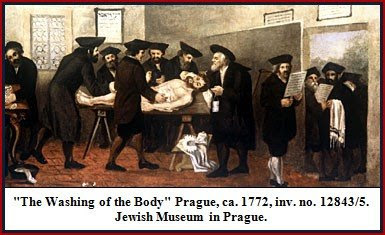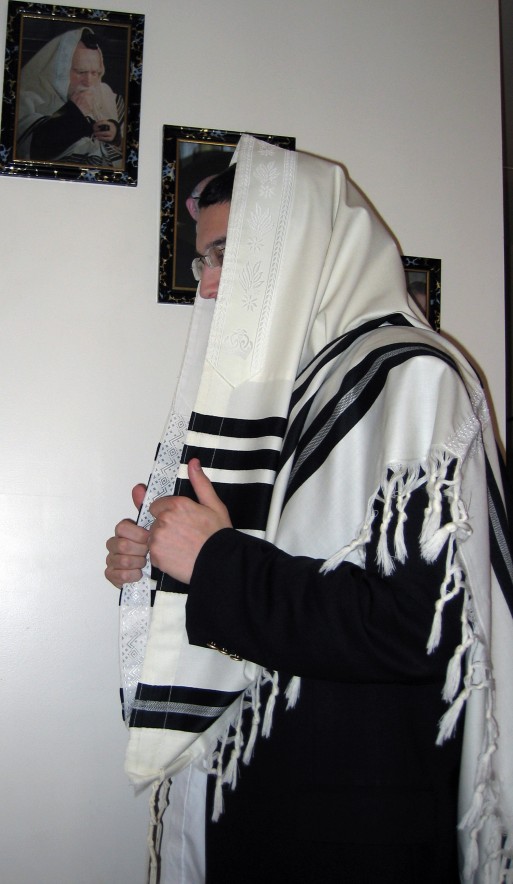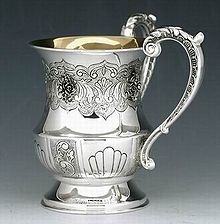In classic Orthodox Jewish tradition, the newly passed are treated much like the newly born. That is, they are ritualistically purified in accordance with an elaborate sacred Jewish custom called the Taharah, and therefore prepared for their next stage of existence.
A specially trained Jewish burial society called the Chevra Kadisha conducts and aids the family throughout the entire ceremony. After death, the body of the decedent is uncovered. All bleeding is stopped and all wounds are bandaged, and the body is carefully washed of all bodily fluids, dirt, grime and detritus. All jewelry and bodily adornments are removed. The body is then either immersed in a sacred bath, or mikveh, or washed in a continuous stream of water. Then the body is dried and dressed in traditional burial clothing or tachrichim, a suit of white, hand-woven muslin, linen or cotton. A sash is wrapped around the clothing and tied in the Hebrew letters “shin,” representing the name of God, and “dalet,” representing lowliness, the consciousness of possessing nothing of one’s own, and the openness to hopes and dreams. A casket isn’t even necessary for taharah, though simple kosher caskets, made entirely of biodegradable wood, are common practice here in the U.S.  Any cushioning or metal bars should be removed. Many European Jewish communities simply wrap the body in a bed of reeds. Before the body is placed in the casket, they will place the shroud on the floor of the casket. Flowers are not used at all. Soil from Israel, if available, is then sprinkled over the body before the casket is closed, and finally buried.
Any cushioning or metal bars should be removed. Many European Jewish communities simply wrap the body in a bed of reeds. Before the body is placed in the casket, they will place the shroud on the floor of the casket. Flowers are not used at all. Soil from Israel, if available, is then sprinkled over the body before the casket is closed, and finally buried.
Perhaps due to its highly elaborate nature, the taharah has fallen out of practice in recent times, especially in the U.S. But, at the same time, there has been something of a re-discovery of the importance, grace and wonder of these rituals, their elegance and the opportunity they offer for dealing with the death of a loved one. Rather than shunning, masking or blocking out the process of death with embalming, expensive caskets and a surfeit of environmentally damaging flowers, taharah embraces death, and encourages loved ones to spend some time with the person who died. An organization called the Kavod v’Nichum, based in Washington, D.C., assists Chevra Kadisha groups in observing the practice, and bringing it to mourners throughout the country. Perhaps it is understandable that in this age of materialism and hyper-modernity, there is a certain attraction towards returning to the old ways, towards embracing the inevitable head-on, rather than hoping and pretending that it will never happen at all.

 Jewish Burial Practices, Today and Yesterday
Jewish Burial Practices, Today and Yesterday





 First the Wealth Gap, Now the U.S. Has a Growing Health Gap
First the Wealth Gap, Now the U.S. Has a Growing Health Gap
 How to Comfort A Dying Loved One
How to Comfort A Dying Loved One
 Our Annual Seven Holiday Gifts for Someone Who Is Grieving, 2024 Edition
Our Annual Seven Holiday Gifts for Someone Who Is Grieving, 2024 Edition














